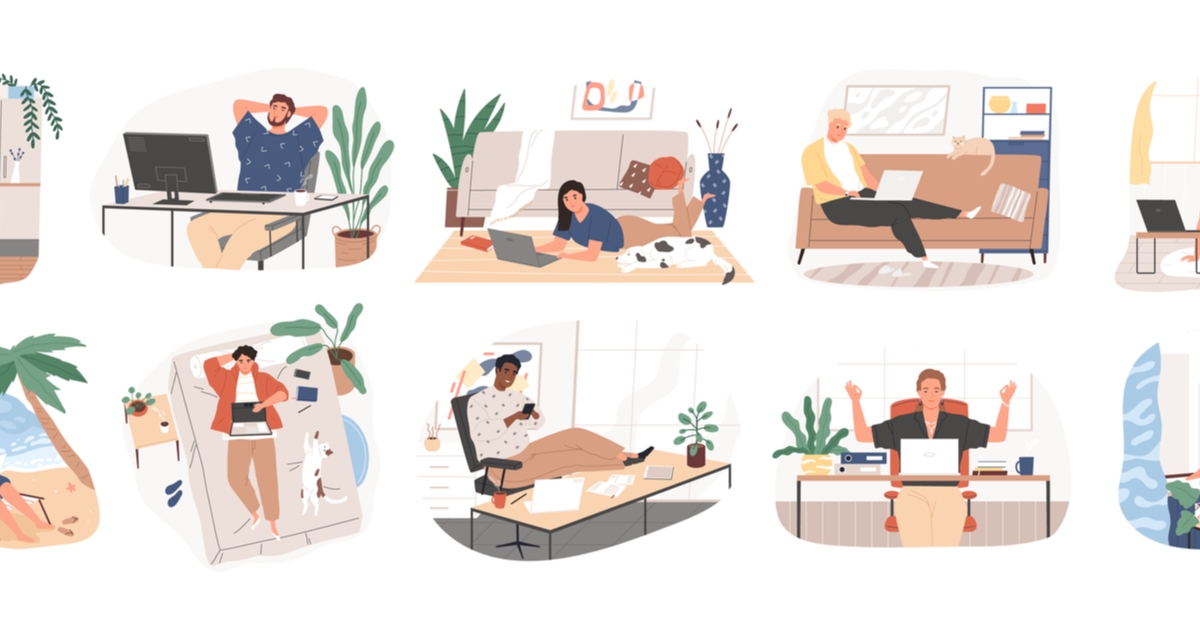
Technology is a Platform Powered by Culture and Values
The Psalmist had a good point. “Though I walk through the valley of death, I will fear no evil, for you are with me.” The companion the author was referring to is a higher spiritual power that is an ever-present presence. That nurturing thought comforts us in times of uncertainty when fear begins to gain a foothold. “…for you are with me,” and therefore, I am not alone.
Like you, I worry about COVID-19. There seems to be so much that is unknown. Who will become ill? How ill? For how long? For weeks, we have wondered about the actual life-risk. Yesterday, our workplace announced – like so many schools, sports teams and places of worship – that in the United States, as in Europe, we are shifting from working in set locations to being good global citizens by practicing “social isolation.”
Though social isolation, we are doing our part by staying healthy and out of the hospital so that vital medical resources can be directed toward those most at risk and in need. When did staying healthy become a collaborative, caring act? Whether we realized it or not, it always was. When someone falls ill – whether due to lack of self-care or misfortune, others must jump in and dedicate themselves to their healing. Staying healthy ensures that care professionals are focused on those who need help the most.
Social isolation has its downside: being alone. But we have been preparing for this, intentionally or not, for several years. What began as a commitment to be a best place to work and support “flexible work conditions,” paves the way for what we all face now – change in where we do our work. In this case, organizational preparation and culture emboldens collective confidence.
At its inception, eight years ago, the company that I now work for had the foresight to invest in remote technologies and invest in training – not just buying into tech but making it part of our day-to-day connection. While technology is often criticized as a distancer, we begin to “play” with our laptop cameras, varied teleconferencing technologies and cloud-based file storage system to come together, first informally and then as “business as usual.” Throughout that social exploration, we were walking through tech challenges, teaching each other as a community.
While “go home and continue to make it happen” is a radical shift for many companies, we have learned that what makes us a community is neither office nor technology, but shared values such as collaboration, mutual respect and working to make a difference in the world. These values enabled us to build community across offices and nations. And as some of us understood new tech faster, we were eager to share skills with those intimidated by pushing the wrong button. Working apart or across nations accelerated our being a learning organization.
Already, colleagues are inventing new ways to connect and retain our composite IQ and solid EQ collective mindset. From morning virtual yoga classes, to virtual birthday celebrations to rapid brainstorms, our community is taking to the isolation challenge by tearing down barriers.
Collaboration is often thought of as “playing well with others.” That’s the coin of entry. It’s an emotional and mindful approach to thinking about how our actions impact others emotionally. With COVID-19 – collaboration takes the form of not snatching up the last roll of toilet paper or not buying more food than you need. Collaboration is seeing yourself as part of the bigger world beyond your four walls – a company, an office, a community a global health concern.
In a Harvard Business Review feature, Cracking the Code of Sustained Collaboration, Francesca Gino, the award- winning organizational psychologist, Harvard Business School professor and author of “Rebel Talent,” writes:
“What’s needed is a psychological approach. When I analyzed sustained collaborations in a wide range of industries, I found that they were marked by common mental attitudes: widespread respect for colleagues’ contributions, openness to experimenting with others’ ideas, and sensitivity to how one’s actions may affect both colleagues’ work and the mission’s outcome. Yet these attitudes are rare. Instead, most people display the opposite mentality, distrusting others and obsessing about their own status. The task for leaders is to encourage an outward focus in everyone, challenging the tendency we all have to fixate on ourselves—what we’d like to say and achieve—instead of what we can learn from others.“
When our business community saw what was happening around the world – what was a stake for people in high-risk groups such as the elderly and those with autoimmune or respiratory illnesses – we acted organically, together. We knew that while our workforce had lower risk, illness meant health professionals and caregivers would be distracted from tending to others more in need.
While being isolated can be unsettling and cause fear, we are not frightened about being separated from each other in this time of uncertainty. We have long been preparing for this moment without perhaps realizing it. And while state-of-the-art technology in the hands of many is a big help, it’s not what binds us together. Our community’s connective tissue isn’t in the cloud, it’s in the individual’s psyche. We share something bigger than a 9 to 5 office. Through our culture of shared values, collaboration and social bonds, we have become a community of purpose, and we’ve demonstrated that journeying successfully through this uninvited unknown valley becomes possible when we’re connected to people who make us feel we’re not alone.

